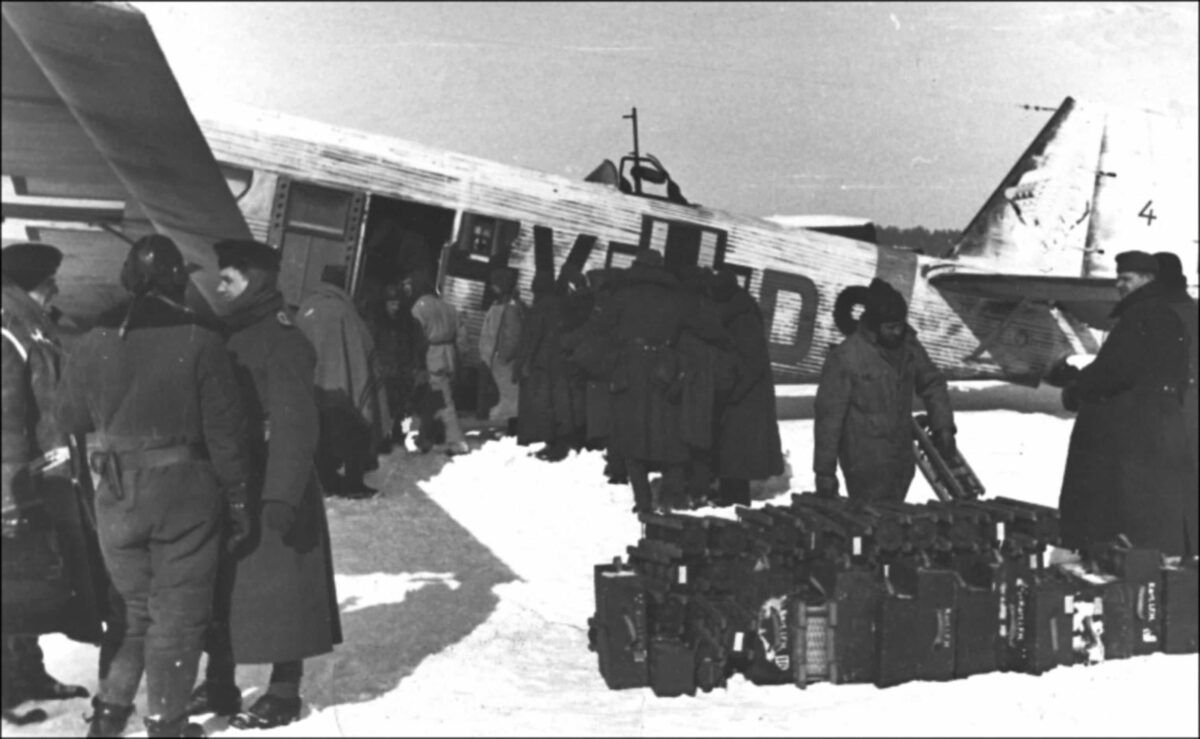Landing of wounded and frost-bitten German soldiers of the Nazi Wehrmacht and Waffen SS to inside the Junkers Ju-52 transport aircraft of the Luftwaffe for their evacuation from the Demyansk Pocket. The Eastern Front, Second World War.
Location: Demyansk Pocket, Peski village
Date: Winter 1942
On February 8, 1942, the last supply route for the Demyansk Wehrmacht group was cut off along with telephone cables by the Red Army. On February 21, units of the Soviet 7th Guards Rifle Division of the 1st Guards Rifle Corps, advancing from the northwest through Ramushevo, joined in the area of the village of Zaluchye west of Demyansk with the 42nd Rifle Brigade of the 34th Army, advancing from the southeast from the area of Molvotitsa. 6 divisions from the 10th and 2nd Army Corps of the 16th Army, including the main forces of the 3rd Motorized SS Division “Totenkopf”, were surrounded in the Demyansk pocket. About 95 thousand people turned out to be in the “boiler”. The encircled group was led by the commander of the II Army Corps, General der Infanterie Walter Graf von Brockdorff-Ahlefeldt. According to the German official terminology proposed by Adolf Hitler, the Demyansk pocket was called the “Demyansk fortress”, according to the unofficial one, nicknamed by the soldiers and officers of the corps, “the county of Demyansk”, since the commander of the encircled II Corps, Walter von Brockdorff-Ahlefeld, had the noble title of count.
The following divisions were surrounded in the Demyansk pocket (the location of divisions from Lake Ilmen to Lake Seliger before the start of the Soviet offensive on January 7, 1942): X Army Corps: 290th Infantry Division, 30th Infantry Division and 3rd Motorized Infantry Division SS division “Totenkopf”, II Army Corps: 12th, 32nd and 123rd Infantry Divisions.
